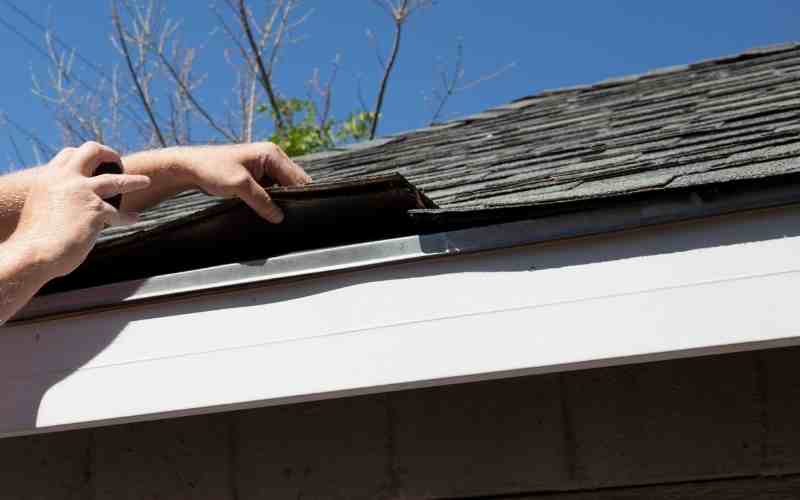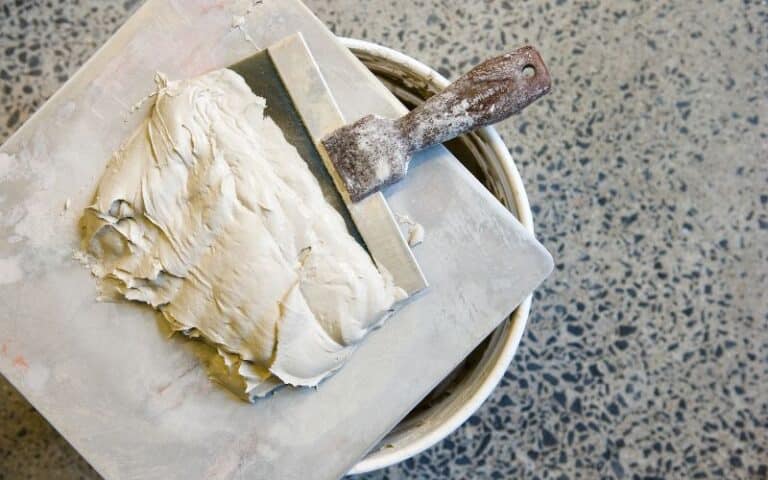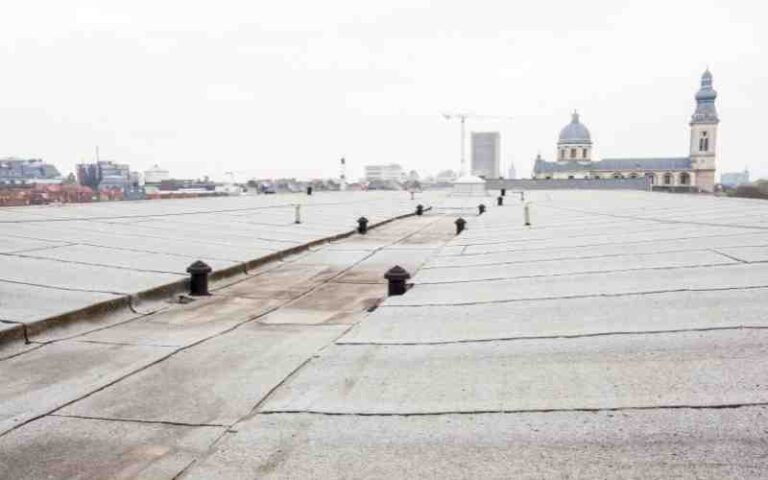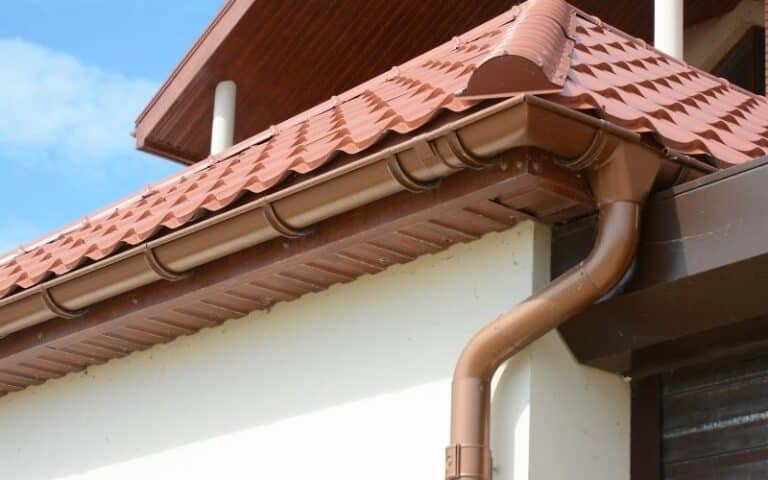Roof coverings come in different types depending on which is much more available in a region. Roof shingles are more common in the United States.
Their structure and texture make them look strong from afar. However, this feature has made people feel that once it’s broken, that’s the end. Roofing materials can be fixed, But can they be glued?
You can glue roof shingles. So, although they are self-adhesive, they can be glued when necessary. The glue is applied once they begin to curl upward or downward due to age. This helps to prevent further curling, thus stopping it from reaching undesirable levels.
Ready for a Roofing Quiz?
Can You Glue Down Loose Shingles?

Loose shingles are gluable. To glue loose shingles, you will need a bituminous roof sealant in a caulk tube. You will also need a caulking gun to apply the roof sealant to the loose shingles.
The causes of having loose roof shingles may be; old roof shingles, poor installation, and weather. In the weather, too much wind can cause loose roof shingles.
To glue down loose shingles:
- Buy a roof sealant or cement. Since roofing cement already comes in a tube or caulking tube, it is easy to apply. However, if it doesn’t come with a tube, use a caulking gun.
- Apply the glue. Carefully apply the cement or roof sealant on the corners of the shingle. Once this is done, gently push the shingles down into their place. It’s as simple as that.
- Allow them to dry. Do not leave it just like that to dry. You should place a heavy object such as bricks on top of the shingle and allow for about 24 hours to dry. It will be dry, and you can remove the object.
Use liquid nails to glue down loose shingles. They are tough and flexible sealants which makes them capable of stopping leaks.
Since liquid nails adhere to wet surfaces and stop leakage, it’s also okay to use them. In fact, these nails pose some important benefits.
They withstand extreme temperature conditions and work on wet roofs. You can apply it during the cold season because it doesn’t freeze.
Put the RR-808 cartridge into a caulking gun with the nozzle cut at 45°. Puncture the inner seal and apply it into the gap. Allow to dry for 24 hours and see how it dries like an asphalt-like finish.
How Do You Secure Loose Shingles?
It is necessary to check the roof shingles periodically for damages. By checking, you can detect on time if your roof shingles are loose or broken. Read more to know how to separate the roof shingles.
To secure loose Shingles, you can do this.
#1. Replace The Roof Shingles
Once you notice a part of a shingle is missing, you might have to change everything. The first thing to do is see if you have any leftover shingles from when it was constructed.
You might be lucky the builder or the roof artisan who treated the process left a few behinds. If not, you may have to purchase another set of shingles.
If you cannot find the exact match, find the one closest to it. That’s one pretty feature of roof shingles, you can always replace them with a close design if you can’t find the exact same.
When replacing broken shingles, you’ll need to have some equipment to aid your work. A hammer, a flat pry bar, a software knife, along with a handful of 11/four-in. Roofing nails.
Every shingle is secured with 4 nails, while the subsequent shingle is inserted. Start discarding the line of nails.
To do this, push the pry bar beneath the shingle in a straight line just above the one broken and gently lift it to lose it out of the sealer strip. Once this is done, you’ll see the primary line of nails below.
Slide the pry bar beneath the broken shingle and pry to the top. When the nail brings up approximately 1/four inches, get rid of the pry bar, push the shingle down, and drag out the nail.
Redo this process for the ultimate 3 nails. Then shift the pry bar beneath the shingle immediately above the broken one and get rid of the second line of nails. When done with all 8 nails, take out the broken shingle.
#2. Glue Application
As shingles age, their corners regularly entwine either up or down. If you observe a shingle beginning to entwine, you could prevent the unavoidable curling with the aid of sticking the entwined section with glue.
You can dab roofing sealant beneath the corner with a caulking gun. Use a brick to hold it in place (right); depart the load in the area for a minimum of 24 hours till the sealant dries. That’s all there’s to it.
#3. Repairing Broken Shingles
You must not always replace a broken shingle. Instead, you can restore it. Begin by using a thick drop of roofing sealant beneath the crack. Push the shingle down, then unfold the sealant using a putty knife.
The good thing about this restoration is that nobody realizes you did it. It’s quite easy to disguise since the sealant looks like the shingles in color.
So, you can also inspect the gutter for colored granules which might have been flushed out the shingles down the roof.
When you can find colored granules on the floor or in the gutter, gather them into a container and scatter them on the sealant to disguise the restoration. This works like magic and creates a perfect blend.
Should Shingles Be Glued To Drip Edge?
The adhesive is not needed for holding on a drip edge. What you need are fasteners like roofing nails. Normally, drip edges should extend beyond the roof decking by ¾ inch.
Apply cement on the drip edges and place the shingles against the adhesive. Remember, adhesives are not needed for holding drip edges but are needed to glue shingles on drip edges.
Shingles along rake edges are powerless to be blown off in tall winds. Normally, the nails alone won’t hold the shingles quickly to the roof.
The hazard is that once the shingles along the edge are blown off, the field shingles may be more inclined to be blown off.
For the Roof Edge Seal or a band of the roof, cement to be viable at holding shingles down, place it straightforwardly to wide metal dribble edges.
You’ll utilize a trickle edge with at least a 5-in.-wide roof leg. At that point, nail it down at almost 4 in a W design along each length.
In addition to making a difference in holding the shingles from blowing off, fixing the shingles down can offer assistance piece wind-driven rain from getting between the trickle edge and the shingle and making its way onto the underlayment.
Conclusion
In this article, we’ve been able to discuss some of the issues that may cause the need to glue roof shingles and if it’s possible to glue them. Steps on how to go about this have been highlighted.
We’re made to understand that cement can be adhesives to glue the shingles, and the liquid nail is not left out.
When you notice a loose or crack in your roof shingles, you should be able to identify the issue and solve the problem.






